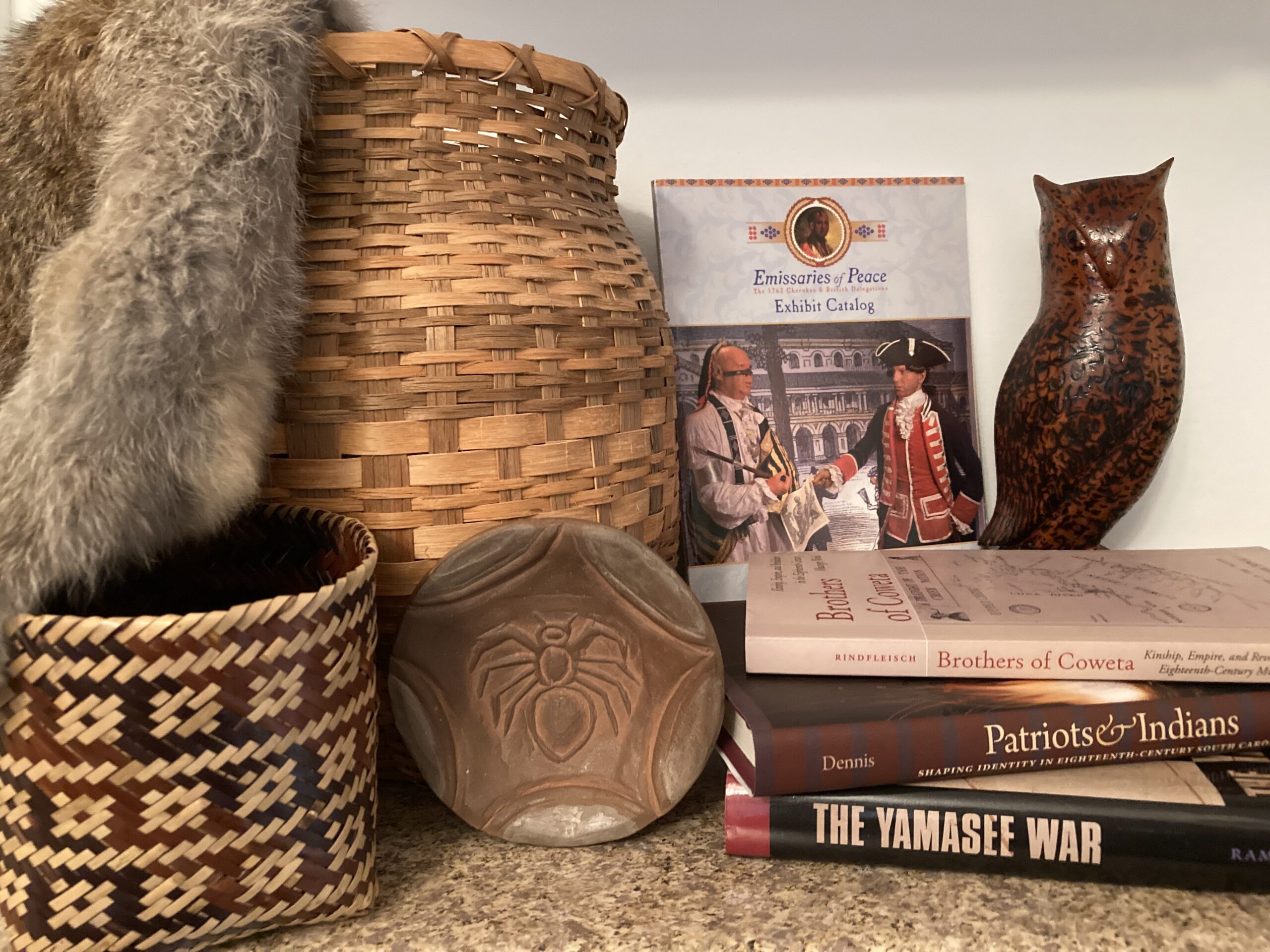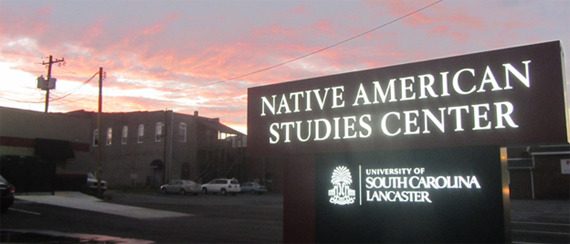Resilience and Revolution:
Native Peoples in 18th Century South Carolina
Native Peoples in 18th Century South Carolina
“Resilience and Revolution: Native Peoples in the 18th Century South Carolina” explores the struggles experienced by Indigenous peoples in South Carolina to retain their independence through the upheavals, unrest, and uncertainty following the establishment of the Carolina colony by the British. “The exhibit examines Indigenous cultures by exploring such topics as Relationship with Nature, Women’s Roles, Social and Governmental Structure, Trade, and Wars of the 18th century. It highlights how colonization and subsequent formation of the United States impacted Indigenous peoples,” notes Project Director Alice Taylor-Colbert.
Prior to European arrival at least 29 distinct tribal communities had lived for centuries in what later became known as South Carolina. Each tribe had its own political, economic, and social systems. As Europeans colonized and threatened their existence, Indigenous communities fought back or accepted the changes to their worlds. The resilience of the Indigenous peoples will be a theme woven throughout the exhibit as it shares information about how war impacts societies, how the pursuit of freedom and happiness can take different forms, and how Native peoples of the 18th century and descendants today can shape our never-ending quest to strengthen our Union.

Engraving of Cherokee delegation by Isaac Basire of Cherokee that travelled to London in 1730, including young Attakullakulla at the far right. Image courtesy of Wikimedia.

Photo courtesy of Alice Taylor-Colbert, Project Director.
“Resilience and Revolution” attempts to illuminate why relationships with European leaders and colonists changed dramatically over the course of the 18th century, in part due to the enslavement of and aggression against various Indigenous peoples. Maps, documents, images, and reproductions in the exhibition illustrate the rich cultural life and values of the diverse Native peoples in the 1700s to allow visitors to better understand this era.
For more information about the project, contact Dr. Alice Taylor-Colbert, consultant for SC Humanities, at atcolbert.consulting@gmail.com.
Where to see the exhibition:
August 18 – September 24, 2022
Native American Studies Center of the University of South Carolina Lancaster

For information about the Traveling Exhibit Program of the South Carolina State Museum and future booking of the exhibition, contact Timia D. Thompson, Collections Outreach Manager of the SC State Museum, at tep@scmuseum.org.
Accompanying Presentations:
The following presentations are available to host sites to accompany the exhibition. Host sites interested in securing a speaker can learn more here.
Christopher Judge is an archaeologist who teaches anthropology classes at USC Lancaster, where he is Assistant Director of Native American Studies. His research interests are in Late Precontact and Early Historic Native American societies in South Carolina. He is willing to do in-person or Zoom presentations. He offers three possible talks:
The Elusive Cheraw Indians of South Carolina
Are the Congaree Indians Descendants of Cofitachequi?
The Great Pee Dee River is named for an Indian Tribe
Bryan Rindfleisch completed his B.A. in American Indian Studies and History at the University of Wisconsin-Eau Claire and his Ph.D. at the University of Oklahoma in Native American history and now teaches at Marquette University. He is the author of George Galphin’s Intimate Empire: The Creek Indians, Family, and Empire in Early America and Brothers of Coweta: Kinship, Empire, and Revolution in the Eighteenth-Century Muscogee World. Given his location, he prefers Zoom presentations. He offers two possible talks:
The Brothers of Coweta: Escotchaby and Sempoyaffee
Metawney of Coweta: A Muscogee (Creek) Woman in the Eighteenth Century
Margaret Spivey-Faulkner is an anthropological archaeologist and Assistant Professor of Anthropology at the University of Alberta (Canada). She is a citizen of the Pee Dee Indian Nation of Beaver Creek and uses archaeology to advance understanding of the Indigenous peoples of the Southeast. Given her location, she prefers Zoom presentations. She offers one possible talk:
The Pee Dee in the 18th Century
Alice Taylor-Colbert is a retired history professor and dean who serves as a consultant for South Carolina Humanities and other organizations. She served on the editorial board of the Journal of Cherokee Studies produced by the Museum of the Cherokee Indian in Cherokee, NC from 1988-2020. She prefers in-person presentations. She offers one possible talk:
Cherokees in 18th Century South Carolina
Exhibit Team, Sponsors, and Partners
Scholars who researched and wrote the content for the exhibit are noted with an *. Professional team members were essential contributors to the project.
Randy Akers, SC Humanities
*Brooke Bauer, University of Tennessee Knoxville
*Julia Coates, Cherokee Nation
Stephen Criswell, Native American Studies Center, USC Lancaster
*Chris Judge, Native American Studies Center, USC Lancaster
Bruce Maggi, Coastal Carolina University
Paul Matheny, SC State Museum
Patrick McCawley, SC Department of Archives and History
*William Ramsey, Lander University
*Bryan Rindfleisch, Marquette University
*Maggie Spivey-Faulkner, University of Alberta (Canada)
*Alice Taylor-Colbert, Project Director
Brittany Taylor-Driggers, Native American Studies Center, USC Lancaster
Timia Thompson, SC State Museum
JoAnn Zeise, SC State Museum

The National Endowment for the Humanities initiative A More Perfect Union provided funding for the exhibit. Any views, findings, conclusions, or recommendations expressed in this exhibition, do not necessarily represent those of the National Endowment for the Humanities.


The Gaylord and Dorothy Donnelley Foundation provided a grant for the exhibit. Additional funding came from South Carolina Humanities and other donors.
Thank you to our partner organizations:


